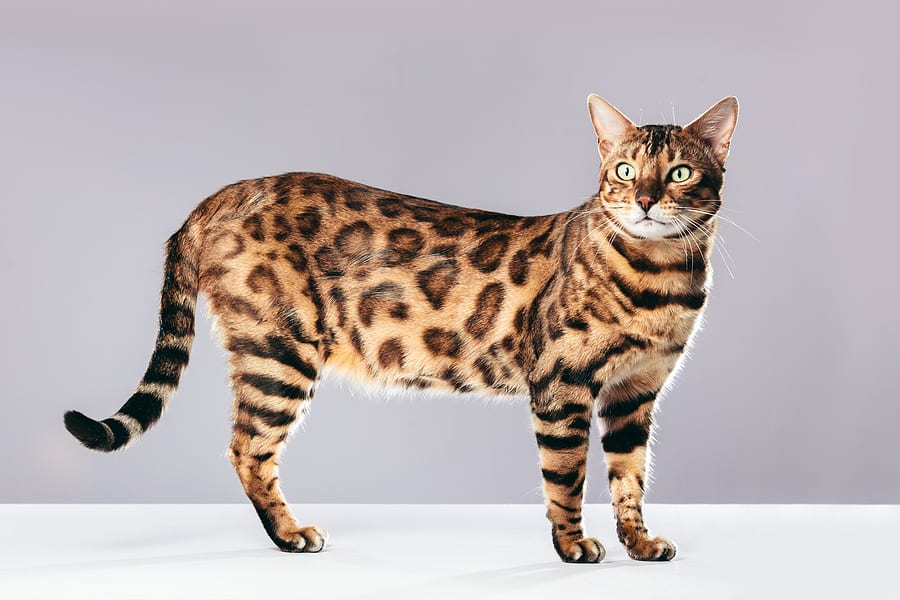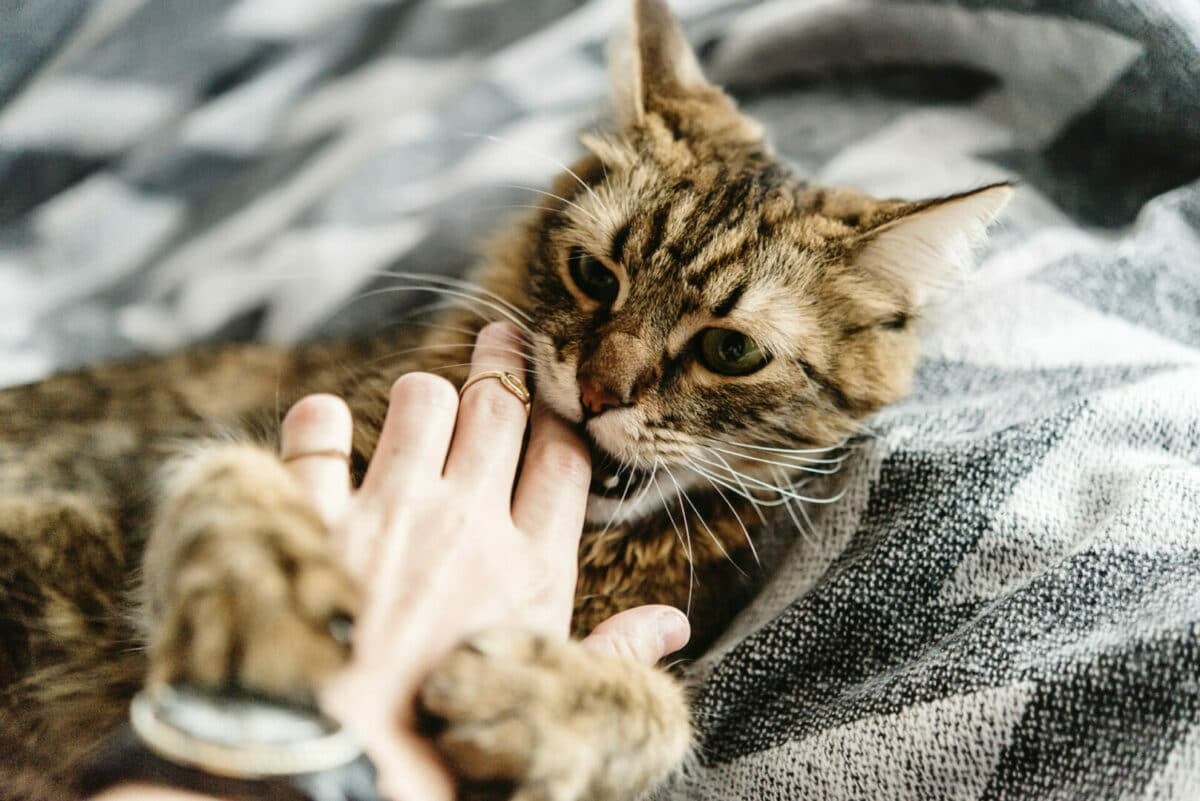Obesity is a common problem for our pets, and if it’s left unchecked, it can lead to a long list of serious health issues. Part of the problem is that it’s impossible to tell if your cat is overweight simply by looking at the number on a scale. Some felines are naturally bigger or smaller than average, and their ideal weight will depend on things like their height and muscles mass. Different cats have different healthy body weights, but as a responsible cat owner, you should have a general idea of whether your cat is fit or fat. Here’s how to evaluate your cat to determine if they’re overweight.
Look at Your Cat From Above
Most veterinarians use a body condition score system that ranges from 1-9. Cats on the low end of the scale are considered extremely underweight, and scoring a 9 would mean your cat is unhealthy and obese. A score of 4-5 is ideal.
You can ask your vet at your next visit where on the scale your cat currently sits, but you can also do this simple test at home. Stand so you’re looking down at your cat’s spine. You should be able to see a slight waist right in front of their hips. Their sides should also be straight and not rounded. If you can’t see any indication of a waist and if your cat’s overall shape seems more rounded or oval, they belong on the higher end of the scale.
Here’s a chart that will help you score your cat’s body condition.
Look at Your Cat From the Side
Switch views so you can see your cat’s full body from a side profile (make sure they’re standing up). If they’re at a healthy weight, you should be able to see that same waistline that you saw from above. It’ll look like a slight tapering that starts after their ribs and goes up into their hips. If there’s no waist, or their belly looks rounded or sagging, they could most likely afford to lose a couple pounds. Don’t confuse your cat’s primordial pouch, however, with a saggy overweight belly. Click here to read about that particular section of skin and why it’s there.
These visual tests are a decent way to get a general idea of whether or not your cat is overweight, but you’ll probably notice a slight problem. If your cat’s fur is extra fluffy, all that floof will hide their natural body shape. You can try holding the fur flat with your hand, but that still won’t give you a good look. Move on to the next test for a more accurate conclusion.
Feel Their Ribs
Under the pretense of giving some nice pets, see if you can feel your cat’s ribs beneath their fur, skin, and fat. At an ideal weight, your cat’s ribs should be pretty easy to feel. They shouldn’t stick out, but you’ll be able to feel those ridges by only putting a little bit of pressure on your cat’s sides.
If you have to dig through a thick layer of fat, or if you can’t feel the ribs at all, your cat is overweight.
Talk To Your Vet
Some cat breeds, like Norwegian Forest Cats and Maine Coons, are naturally bigger than the average feline. There are also some cats that bring up a high number on the scale, but that’s because they’re pure muscle, and muscle weighs more than fat.
The simple at-home tests we talked about above will give you a general idea of your pet’s obesity risk. It’s always best, however, to hear the facts straight from your vet. With their experience, they’ll be able to objectively evaluate body condition score and let you know of any concerns. They’ll also weigh your cat at every visit, so you can keep track. It’ll be hard to tell whether your aging cat is gradually packing on the pounds just by looking at them every day. But with regular weigh-ins, you can catch your cat’s potential weight problems before they get too serious.






